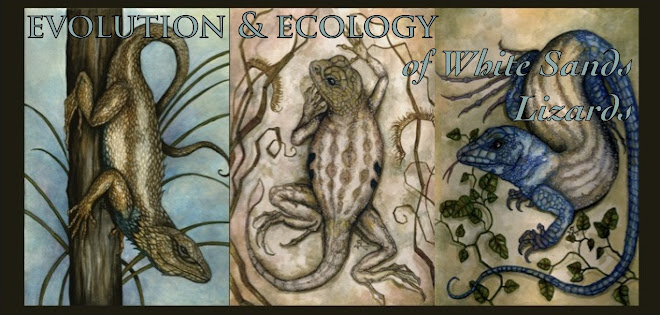~~~~~~~
The purple clouds finally descended on Otero County and the local grocery store parking lot. It has been four months without rain in the Tularosa Basin. As I write, acres of gypsum are dissolving on the surface of White Sands... encouraging hydrophiles everywhere to crawl up from the depths of drought. The last few days the humidity has become more and more apparent. The air clings and so do the tiniest little flies who seem to bite everywhere from behind the ear to the arch of the foot. My supervisor, Luke Harmon's words ring true- insects aren't good for anything except food for lizards!
 |
| Handful of New Mexican Spadefoots (spadefeet? Spea multiplicata) who came up with the rains last year at Jornada Long Term Ecological Research Center |
We have captured, measured and marked 54 Holbrookia maculata on the ecotone between White Sands and the Chihuahuan Desert. To be honest, after nine or so full days of catching- I expected to have more lizards. To me, ecotone animals seem flighty, suspicious and less conspicuous than their counterparts in the heart of White Sands. Certainly, there are more birds, lizards and mammals on the ecotone, as evidenced by noisy chatter, numerous tracks and occasional sightings.
 |
| Common Nighthawk (Chordeiles acutipennis) Mikki spotted beside our ecotone site. Nighthawks are insectivores, usually feeding on moths at night. |
Due to the lack of lizards we've seen on the ecotone, we may be moving on to sample further in the dunes where H. maculata is abundant. We'll spend at least one more day on the edge of White Sands returning lizards and scouting around.
~Simone


The house gecko caught my eye as I was google image searching a inspirational desktop picture for my computer. Lol, I didn't know this was your blog until I thumbed down to the end. What a coincidence.
ReplyDelete-Isaiah Hoyer